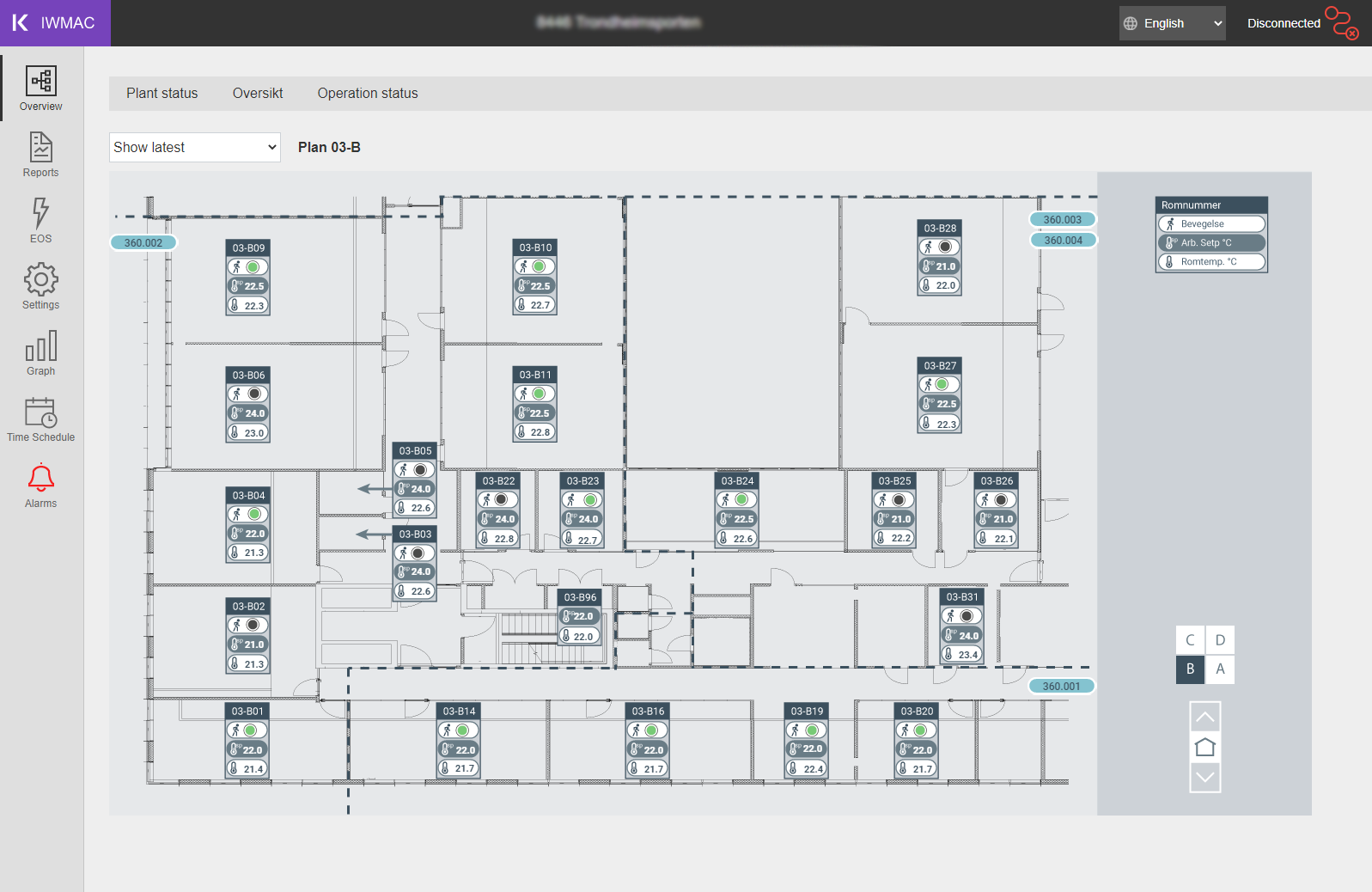Building owners naturally want their tenants to be happy. If you manage a building, you probably feel partially responsible for ensuring this is the case. Because not only do people dislike bad air – it quite simply makes them less productive. It can even be harmful to health. With these tips, you can achieve your (indoor) climate goals – and save energy in the process.
Get an overview
One obvious first step is to have a place to check the air quality. If you have the right components in the building, it should be easy to visualize – and easy to measure.

"If you have a large building with lots of offices and meeting rooms, it can be difficult to check the air quality manually. An all too common way to solve this is simply to cross your fingers and wait until someone calls to complain. But if you want the people in your building to be happy, you can't always be reactive. And if you're going to keep on top of the issue, you need an overview," says Jostein Markussen of Kiona.
Monitor the parameters
The air quality in a room is a combination of several parameters: the actual volume of air entering the room, the amount of CO2, dust particles, and so on. But when people complain about "bad air," it's often the temperature they are truly unhappy with.
"That's something that can be a challenge for anyone in charge. If the temperature is too high, people may perceive it as poor air quality when it isn't. To be able to take the appropriate action, you need to know what the problem really is," says Jostein, who adds that the sensors on the market are getting better:
"Today's sensors can give you precise information about the parameters contributing to air quality. At Kiona, you can integrate Airthings, which measures everything from temperature and air pressure to volatile organic compounds (VOC) and radon, to take this one step further."
Make sure you're notified
If you want to be able to solve the problem before people start calling to complain, you need to be notified in time. With smart logic, you can automatically receive a notification when a specific parameter goes above or below certain limits – whether it's official limits or those of the building owner. You need to monitor and be notified about plenty of things: Is the air coming in where it should be? Is the ventilation system starting at the right time? Is it delivering the right volume of air?
"All these things affect both the air quality and energy consumption. If the capacity of a system isn't good enough, you need to be warned. The same is true if a filter is blocked. Remember that this results in both poorer air quality and increased energy consumption. But if you don't have monitoring with notifications, you won't know until someone complains. Or when you get your electricity bill," says Jostein.
Zone control is valuable
Zone control is an approach that saves you energy costs – without compromising on air quality. A lot of people working from home at the moment? Maybe you can close the valve for specific zones to supply less air to them. That means lower energy consumption while still maintaining the indoor climate. Meeting and conference rooms that are only used occasionally? Providing ventilation around the clock is a waste of energy.
"It doesn't just have to be about ventilation either. If your heating is connected to and controlled by the same system, you can turn it on and off as needed. You can trigger it through sensors or systems for room bookings," says Jostein.
"It's better for the indoor climate, better for your wallet, and better for the environment."
Want to stay on top of your air quality? Check out our building management solutions.